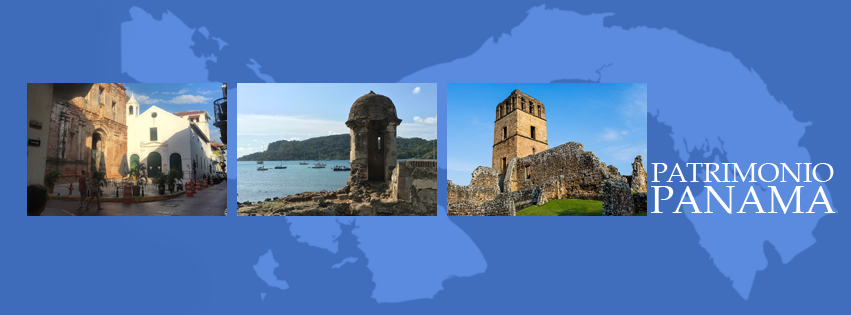The 37th Session of the UNESCO World Heritage (37 COM) ended the day 27 June 2013. Today, World Heritage Centre issued the document WHC-13/37.COM/20 dated 5 July 2013, containing all the decisions adopted by the Committee in Session 37 COM.
The decision concerning the Archaeological Site of Panama Viejo and Historic District of Panama is located on page 146 Document WHC-13/37.COM/20, in English. The document is also available in French, and both are original versions.
Then, a translation UNOFFICIAL Text of Decision 37 COM 7B.100:
100. Archaeological Site of Panama Viejo and Historic District of Panama (Panamá) (C 790bis)
Decision: 37 COM 7B.100
The World Heritage Committee,
- Having examined Document WHC-37/37.COM/7B.Add,
- Recalling Decisions 33 COM 7B.141, 34 COM 7B.113, 35 COM 7B.130, 36 COM 7B.103, adopted at its 33rd (Seville, 2009), 34th (Brasilia, 2010), 35th (UNESCO, 2011) and 36th (Saint Petersburg, 2012) sessions, respectively, and its concern that the construction of the Cinta Costera Phase 3 (Maritime Viaduct) would irreversibly impact on the property,
- Also recalling the state of conservation reports and reactive monitoring mission reports of March 2009, March 2010 and October 2010 that underscored the impacts of the Cinta Costera project, in particular the Maritime Viaduct, and the poor state of conservation of the property;
- Notes the progress with developing a Management Plan, with quantifying the number of buildings at risk and with work on streetscapes, and undergrounding networks, and reiterates its deep concern about the overall state of conservation of the property, and regrets that no sufficient progress has been made in comprehensively and sustainably addressing issues, or in implementing the emergency Action Plan agreed in 2009;
- Also regrets that the State party decided to launch the construction of the Cinta Costera Phase 3 (Maritime Viaduct) that modifies in an irreversible manner the relation of the historic centre with its wider setting;
- Requests the State Party to submit by 1 February 2015 a significant modification to the boundaries to allow it to justify a revision of the Outstanding Universal Value of the property;
- Also requests the State Party to invite as soon as possible a high-level World Heritage Centre/ICOMOS Reactive Monitoring Mission, guided by the World Heritage Centre, to discuss the different possibilities of this modification;
Considers that in the absence of the implementation of the request made in this decision, the property would be deleted from the World Heritage List at its 39th session 2015, in conformity with Chapter IV.C of the Operational Guidelines.
-End UNOFFICIAL translation of Decision 37 COM 7B.100. The underlined and bold text correspond to underlined text and bold text in the original version in English, which is available at, http://whc.unesco.org/document/123631 page 146 and page 147.
The procedure for a “significant modification to the boundaries” is decribed in the Operational Guidelines for the Implementation of the World Heritage Convention; namely, on the “handbook” of the World Heritage Convention. This procedure involves submitting the proposal (for boundary modification) as if it were a new nomination to get inscribed on the World Heritage List, gathering all the necessary conditions. As shown in the Decision, no deterioration was noted at the Archaeological Site of Panama Viejo to warrant its reduction, but (it was noted) in the Historic District (Casco Antiguo).
Let us take into account that the boundaries of the property comprise the boundaries of the Historic District of Panama (delineated by Law 91 of 1976, from the sea to the 12th Street 12 West, mainly) and the boundaries of the Archaeological Site of Panama Viejo (delineation by Law 16 of 2007). The boundaries of both components, Panama Viejo and Casco Antiguo together, constitute a single property.
To get inscribed on the List of World Heritage in Danger, it is required that the property at risk is already inscribed on the World Heritage List, and that the characteristics which determined its inscription on the World Heritage List have not deteriorated to the extent that they have been lost. (Operational Guidelines, Section IV.C).
The statement in paragraph 5 of Decision 37 COM 7B.100, “Cinta Costera Phase 3 (Maritime Viaduct) that modifies in an irreversible manner the relation of the historic centre with its wider setting” it is of great concern that it contains the word “irreversible”, that highlights the strength of the contents of the Decision, while paragraph 8 underscores that, if the requirements set out in the decision are not fulfilled,, the property shall be deleted from the World Heritage List, without the option of getting inscribed on the List of World Heritage in Danger.
For more information, see entries:
- The debate on the Archaeological Site of Panama Viejo and Historic District of Panama in Session 37 Com of the World Heritage Committee of UNESCO
- State of Conservation 2013 for 790bis (unofficial translation)
____
Note:
Thanks to the transparency policies of UNESCO and its World Heritage Centre, all documents cited in this article of the Blog, Patrimonio Panamá are public information of open access for all around the world from UNESCO websites, and by means of the Information System of the State of Conservation (SOC), open to the public from 2012 (Click here to see related news: http://whc.unesco.org/en/news/962/).

